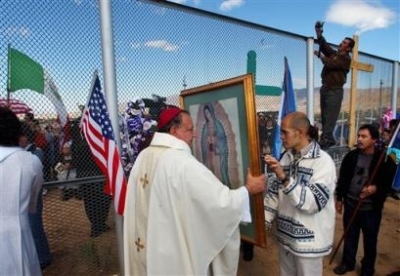Millions Celebrate Day of the Dead
Millions of Mexicans trekked to cemeteries this week as part of a two-day celebration rooted in Roman Catholic tradition and ancient pagan rites.
Millions of Mexicans trekked to cemeteries this week as part of a two-day celebration rooted in Roman Catholic tradition and ancient pagan rites. The celebration, which began on Nov. 1 with the Day of the Innocents to honor departed children, ended with the Day of the Dead on Nov. 2 to remember adults.

"It's a happy occasion because you're remembering someone beloved," one man told Reuters.
The Day of the Innocents and the Day of the Dead, which correspond with the Catholic celebrations of All Saints Day and All Souls Day, are two of the most colorful and deep-rooted traditions in Mexico. They are celebrated in Mexico, Ecuador, Guatemala, and other areas in Central and South America populated with the Latino ethnic background as well as areas of the United States, such as California, Texas, and many others, in which the Mexican/American heritage exists.
In Mexico, where the Day of the Dead is considered to be the most important holiday of the year, the holiday tends to be a subject of fascination for visitors from abroad. With its rare mix of pre-Hispanic and Roman Catholic rituals, the Day of the Dead is also an illustration of the synthesis of pre-Hispanic and Spanish cultures that has come to define the country and its people. Sources say the success of the Spaniard's spiritual conquest in Mexico was due in part to their willingness to incorporate certain pre-Hispanic customs into Christian practices. The correspondence between the Day of the Innocents/Dead and All Saints/Souls Day is said to have resulted from the Catholic Church's efforts to "find similarities between the indigenous and Christian beliefs."
Today, the Day of the Dead can range from an important cultural event, to a religious ceremony, to just a unique Mexican holiday symbolized by special foods and candy. In Mexico, the more urban the setting, the less the religious and cultural importance is recognized by the people. The more rural and "Indian" the setting, the greater is the religious importance of the holiday. Therefore, this celebration is usually of greater social importance in southern Mexico than in the northern part of the country.
Although the celebration has transformed through the years and certain customs vary within different regions, the holiday is still best described as a time when family members who have died are remembered.




























